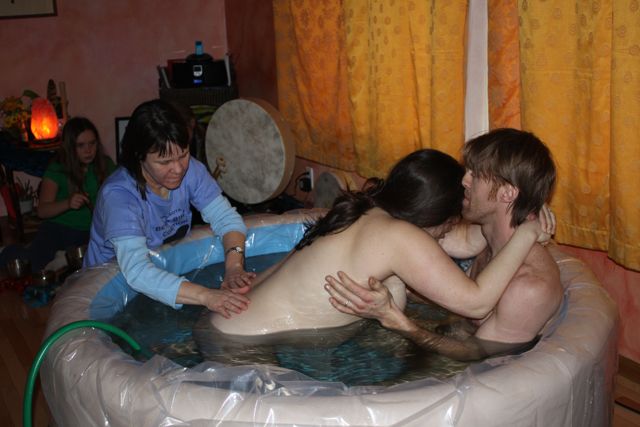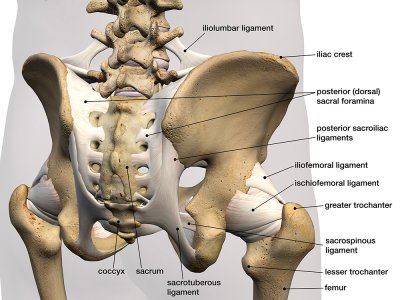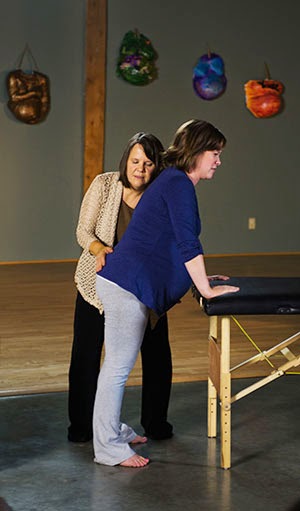
Mobility allows function. The sacrum is the door of birth. A mobile sacrum allows the door to open.
The sacrum is a five bone set that hangs as seemingly one bone from the ilium (hips). The big round hip bone is joined to the triangular sacrum by the sacroiliac (SI) joints. Supporting the range of motion in the SI joints is one way of adding mobility. And another way is through the slight fascial movement of the five sacral bones themselves.

An immobile sacrum is the antithesis of vaginal birth. The pelvis opens for the baby, quite literally. Without a sacral response we are left wondering why the baby who is now neatly with their chin tucked and back to the left is still not able to fit the pelvis. There needs to be a little give.
When the sacrum bulges out, we know it’s mobile. This happens in very late labor, however. A skilled bodyworker can assess the sacrum through joint alignment and craniosacral and fasical pulses. For a deeper dive than this, folks, please “google” those phrases.

We desire mobility but not so much that the pelvis is unstable from loose or non-firing muscles which cannot support stability of the joints. So we stretch each day in special ways for the comfort of stability
A full range of motion is helped by gentle pelvic tilts, walking, hip openers, and especially calf stretches and flat-footed squats with the anterior pelvic tilt. The occipital bone is the “sacrum” of the skull and connects to the sacrum through the mediation of the backbone.
Imbalance in either skull or sacrum, can cause headaches or back pain and other discomforts and, perhaps, eventually, disease. When the pelvis is balanced by a bodyworker and quickly returns to its habit of imbalance, look for cranial work on the skull. Rest Smart is a Spinning Babies service to educate parents on use of gravity while sitting and lying down to maintain the balance all this work achieves during pregnancy.

Above is a photo of Gail beginning Dr. Carol Phillips’ Standing Release, sometimes called the Standing Sacral Release. This is an excellent way of mobilizing the sacrum. Include a Side-lying Release and for less flexible sacrums, add a Sacrotuberous Ligament Release. These come to us through Dynamic Body Balancing, Dr. Carol’s gift to the world.
Other ways of helping the sacrum be more mobile, and joints, might be Polarity Therapy, Ortho-bionomy, and gentle Fasciatherapy, Danis Bois Method, Craniosacral Therapy, and techniques to release the sacrotuberous ligament.
Standing Sacral is on the Spinning Babies® Parent Class video. Enjoy this post? You also might like:
[tribe_events_list limit=”4″]